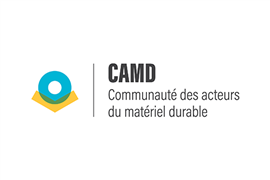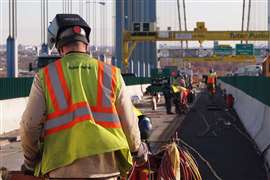Rental Review Europe: IPAF's reserch into the European rental market
17 August 2010
This is the second year IPAF (International Powered Access Federation) has commissioned research into the powered access rental markets.
Pia Vaquer of Ducker Worldwide, which carried out the research, has summarised the European report for Access International - the US report follows in the next issue.
The IPAF European Powered Access Rental Report 2009 examines 11 countries: the UK, France, Germany, Spain, Italy, the Netherlands, Belgium, Denmark, Norway, Sweden and Finland. The USA is covered in a separate report.
The report estimates the total MEWP (mobile elevated work platform) rental market value in 2009 in the 11 countries surveyed at approximately €2.2bn, representing around 85% of the total European market. This gives an approximate value of €2.6bn for the total European market.
The leading market in terms of maturity and volume remains the UK, but in terms of value it is already equalled by France and Germany. The Spanish market has declined to the extent that it is now preceded by Italy and by the Netherlands.
MEWPs represent on average almost half of the total rental revenues with the study target population, i.e. rental companies that provide MEWPs. Specialist MEWP rental companies, for whom MEWPs represent over 50% of rental revenues, lead the European market. Although the majority of the market is held in most countries by large companies, European MEWP rental markets remain comparatively fragmented.
Around two-thirds of MEWP rental revenues in 2009 were generated from construction work - much less than a year earlier, due to the construction industry slowdown. This has led rental companies in most countries to turn increasingly towards industrial manufacturing and building maintenance, despite the lower utilisation rates involved.
The European rental market suffered a steep decline in 2009 compared to the boom years 2007-2008. Although the slowdown started in the second half of 2008, the report shows that MEWP rentals still recorded excellent results that year. The full impact of the downturn was only felt in 2009, when a 13% decline made the market value drop back to a similar level as in 2007.
A much more severe decline could have been expected, but the situation was found to be very heterogeneous between countries and segments. Markets most negatively affected include Spain, the UK and the Nordic countries, where construction fell dramatically. Less hit were Italy and the segment of small rental companies overall, many of whom managed to expand and gain market share. Specialists are also expected to recover more quickly in Europe than general rental companies.
Europe still benefits from growth potential and this contributes to holding back the decline particularly in the countries where MEWP utilisation or rental is less mature.
The market outlook as evaluated around February 2010 shows a flat 2010, with a rebound as of 2011. The report notes however that the bad weather conditions throughout the first quarter of 2010 may have cast a shadow on these comparatively positive expectations.
The European MEWP rental fleet size remains relatively stable throughout 2008-2010, with a moderate decline in 2009 but no massive de-fleeting. Fleet size declined the most in Spain and the UK and with large generalists, but it increased among small rental companies, whose need or indeed ability to de-fleet is lower.
Average revenues per MEWP unit declined with all segments in 2009 and show a continued decrease in 2010. The average unit revenue varies significantly between countries, due to national differences in fleet mix and rental rates as further outlined in the report. The highest revenue per unit is found in Germany. Moreover, specialist MEWP rental companies in Europe record higher revenue per machine than generalists, due to more high-value niche products and, generally, although less so in 2009, higher utilisation rates.
In the boom years 2007 and 2008 in particular, investments were clearly superior to divestments. This resulted in excess stock as demand suddenly declined. As of 2009, the value balance therefore shifted significantly towards a "plus/minus zero" situation, as many units were sold without being replaced.
Divestments increased slightly in 2009 but have not been as extensive as might have been expected; instead, the difference was made by investments, which heavily declined. Nevertheless, investments did not come to a complete halt. The report discusses several possible reasons for this, including orders already placed in 2008 and the time lag between the decline of revenue and its impact on investment. Equipment has also shifted hands and partly remained in the industry, as some rental companies seized the opportunity to buy used equipment at attractive prices.
Small companies and specialists show a more positive balance between investments and divestments than large companies or generalists. A negative trend is still expected in 2010 and 2011, as de-fleeting is undertaken very gradually and the market will be unable to invest again before the return of cash flow.
A large part of the decline in MEWP rental revenues was accounted for by a significant drop in rental rates in 2009, especially in Germany, the UK and the Nordic countries. In Spain, the decline in rates started in 2008. The forecast shows this trend continuing to a lesser degree in 2010, but rental companies hope for a slight catch-up as of 2011.
The overall time utilisation of MEWPs in the European countries under study was down to 55% in 2009. Variation is greater between individual companies, products, applications and seasons than between countries. Utilisation rates are normally lower with generalist rental companies than with MEWP specialists, but the economic situation in 2009 has ironed out this difference.
The average MEWP fleet age in these countries is nearing five years. It is expected to have gained one year between 2008 and 2010, due to reduced investment versus limited de-fleeting. In line with this, the average selling age in 2009 was around eight years, ranging from six years in Spain, much affected economically, to nine in Germany.
Other subjects covered in the IPAF report include cross-hire, activities outside rental, MEWP replacement value and inventory, employment, market maturity comparisons and axes of development for rental companies.






